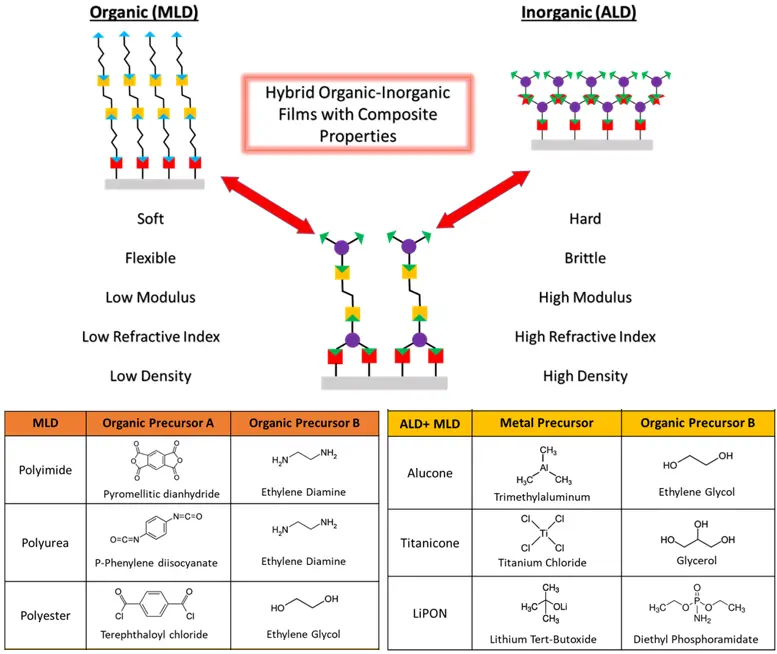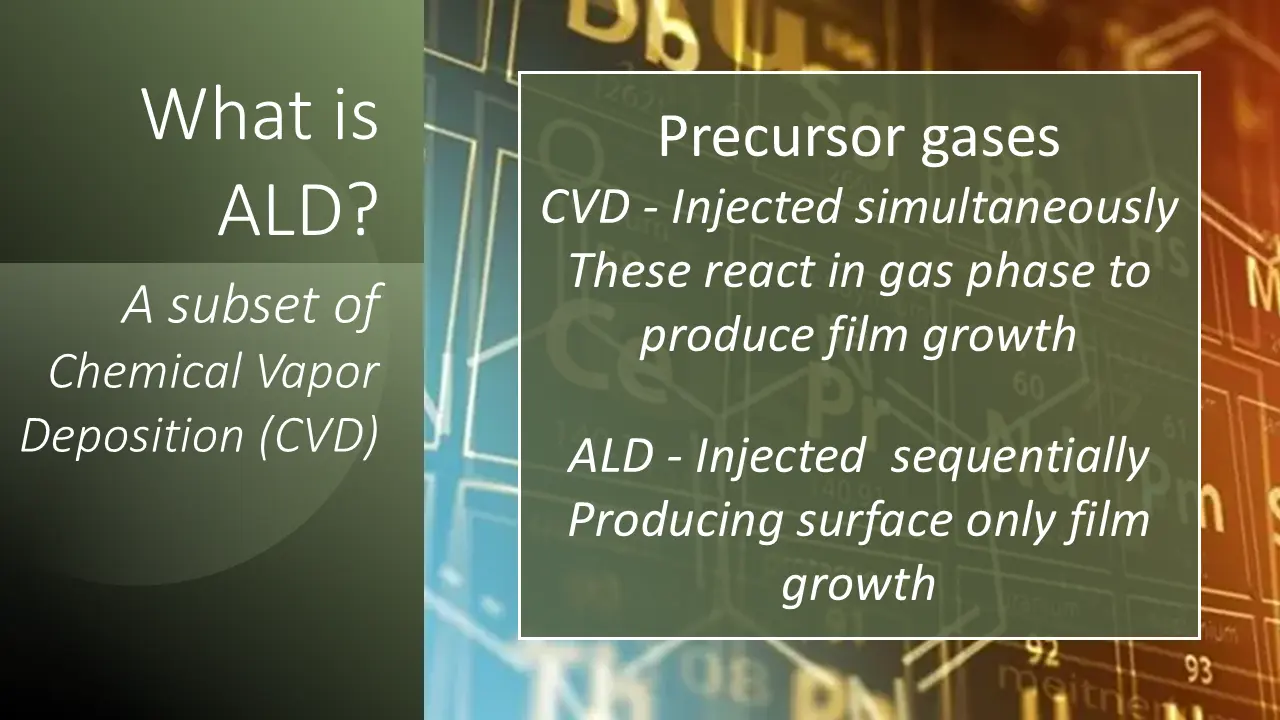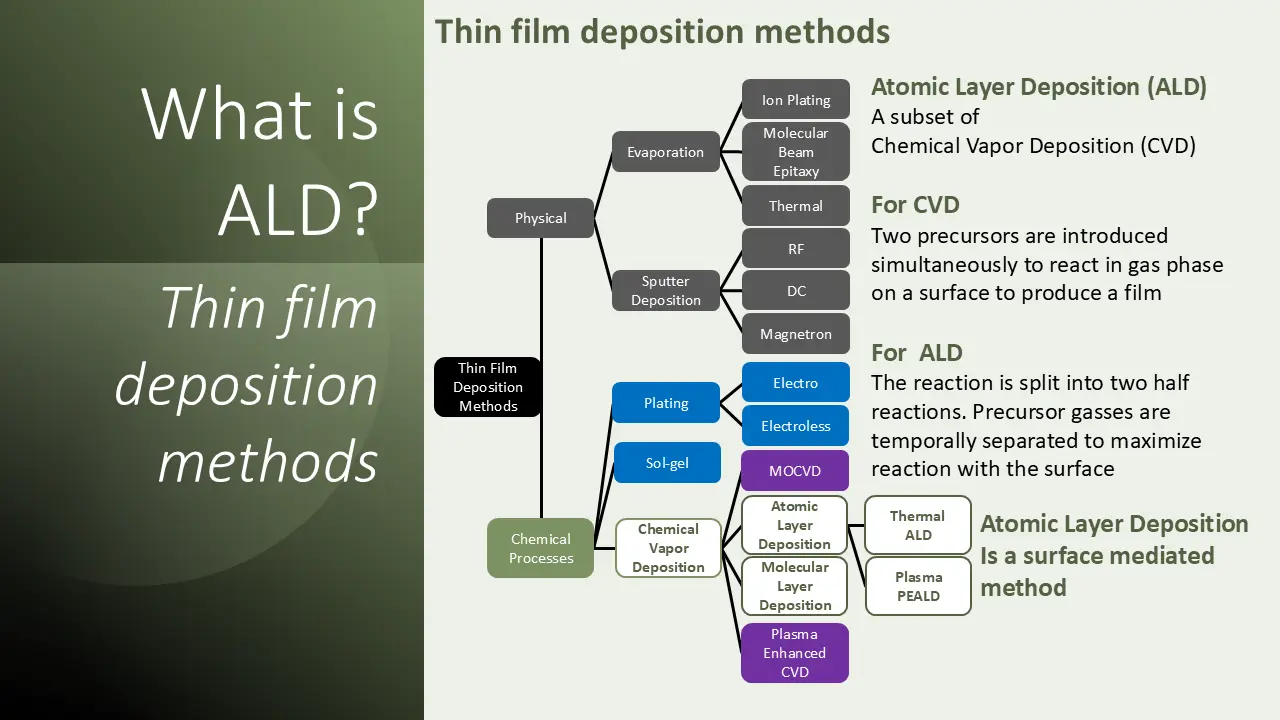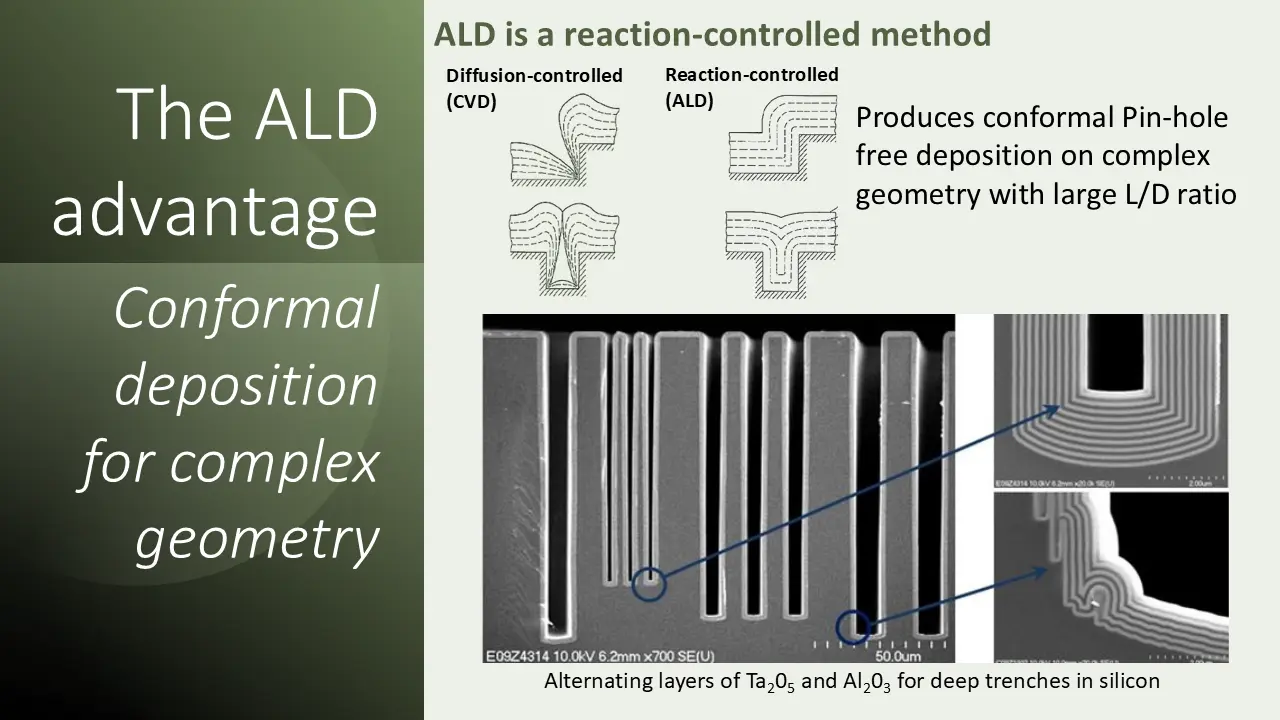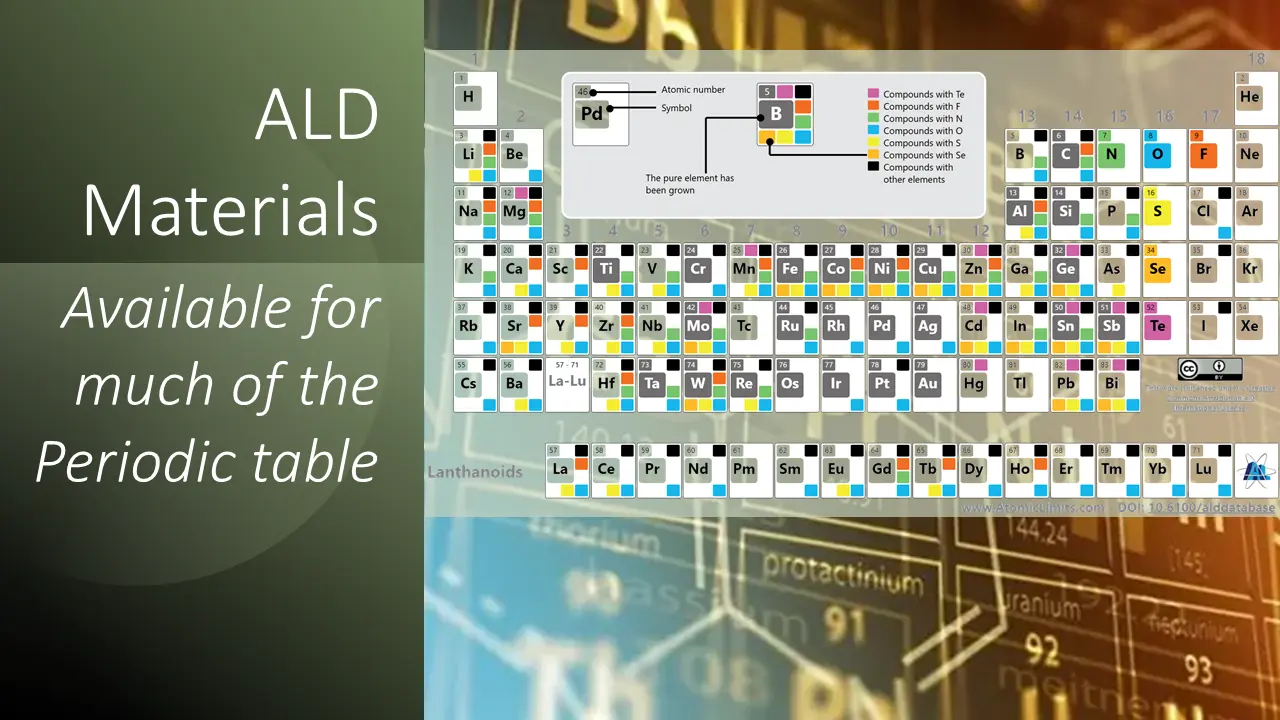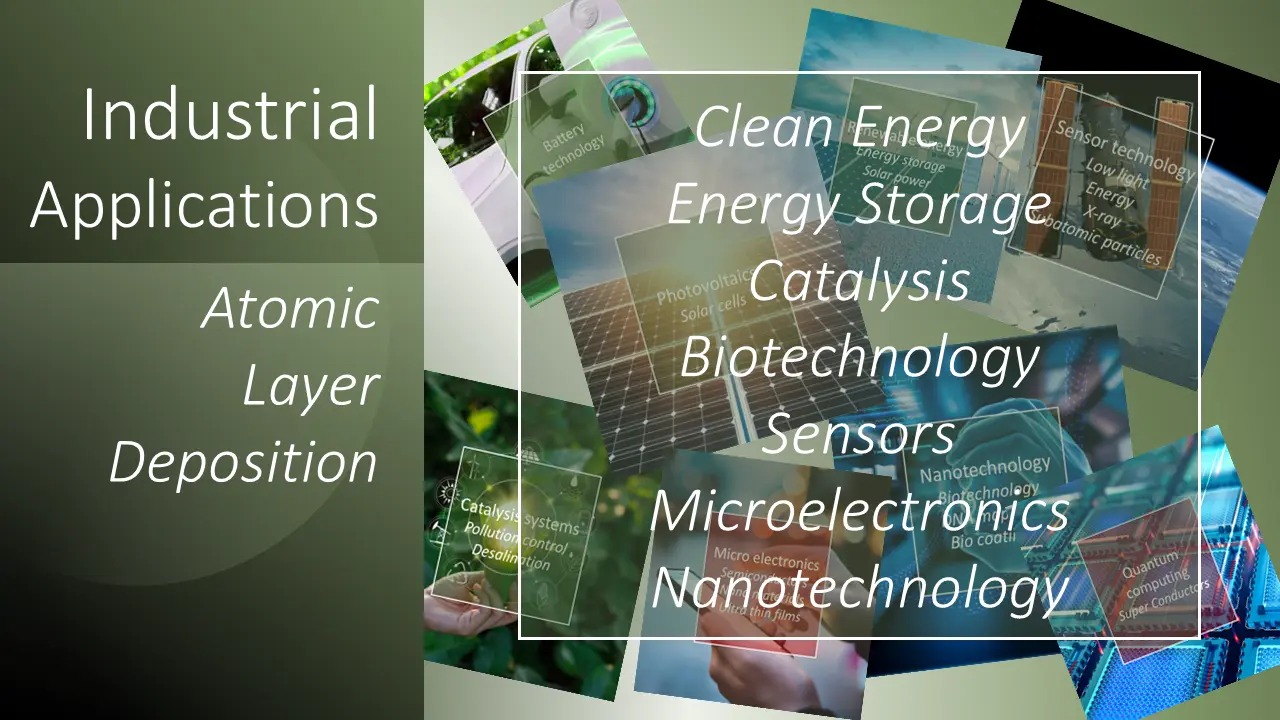What is
Atomic Layer Deposition(ALD)
Atomic Layer Deposition(ALD) overview
ALD exposes surfaces with pulsed chemical vapors called precursors
ALD exposes a surface sequentially with pulsed chemical vapors separated by a nitrogen purge. A first precursor forms one monolayer of coating by reacting with the substrate surface (usually with OH groups terminating a surface). The next precursor reacts with the surface of the previously formed monolayer and forms another monolayer. Usually two different precursors are used, resulting in binary coating materials (like Al203), although elemental coatings (pure metals etc.) and much more complex compositions are also possible
The number of monolayers of the coating (thickness) can be determined simply by setting the number of sequential pulses. The vapors do not condense on the surface, because the excess vapor is evacuated between the precursor pulses using a nitrogen purge. This means that the coating after each pulse is self-limiting to one monolayer. This allows complex shapes to be coated with atomic precision (the coating thickness inside a porous material will be the same as on its surface!). Due to this and many more remarkable features, ALD is becoming increasingly popular for more and more applications
The inherent strength of ALD technology
Is the ability to utilize much of the materials available on the periodic table as shown above. In addition, conformality and the ability to adapt to various substrates, shapes and high aspect ratio structures producing uniform, pinhole free single material and nano-laminate coatings has created broad interest in many fields
For more information please contact Product Sales
What is
Molecular Layer Deposition (MLD)
Molecular Layer Deposition (MLD)
MLD is a gas phase deposition technology
Extending the Toolbox of Gas Phase Deposited Materials with GEMStar XT-D
Molecular Layer (MLD) is a gas phase deposition technique. It can be used to deposit thin conformal organic polymers such as polyamides, polyimides, and polyesters to name a few. Similar to ALD, MLD separates the reaction of co-reacting chemicals into two surface- mediated half reactions separated by a purge step

With a unique dual manifold design
Patent pending gas distribution
Arradiance’s GEMStar XT-D is the ideal tool for depositing MLD and ALD films. By separating co-reacting precursors within two individually heated manifolds, deposition and film grown only occur within the chamber and not within the manifold lines. This key feature separates the GEMStar- XT-D from other commercially available ALD tools and is the only Benchtop tool capable of safely depositing ALD and MLD films. Furthermore, the compact and small footprint of the GEMStar XT-D takes up minimal lab space and can easily be integrated to any Glovebox making it an ideal tool for air sensitive research

Some organic precursors can react with inorganic precursors
Defining a new class of hybrid organic-inorganic thin films. These hybrid materials have properties that range between pure organic and inorganic films, allowing for control over density, refractive index, elastic modulus, and hardness
This enables developing films with precisely tuned mechanical, optical, chemical bio-chemical, and electrical properties, further extending the range of materials that can be deposited. Given these unique tunable properties, ALD and MLD have found application in a number of difference fields including energy storage, fuel cells, photovoltaics, biotechnology and semiconductors to name a few
